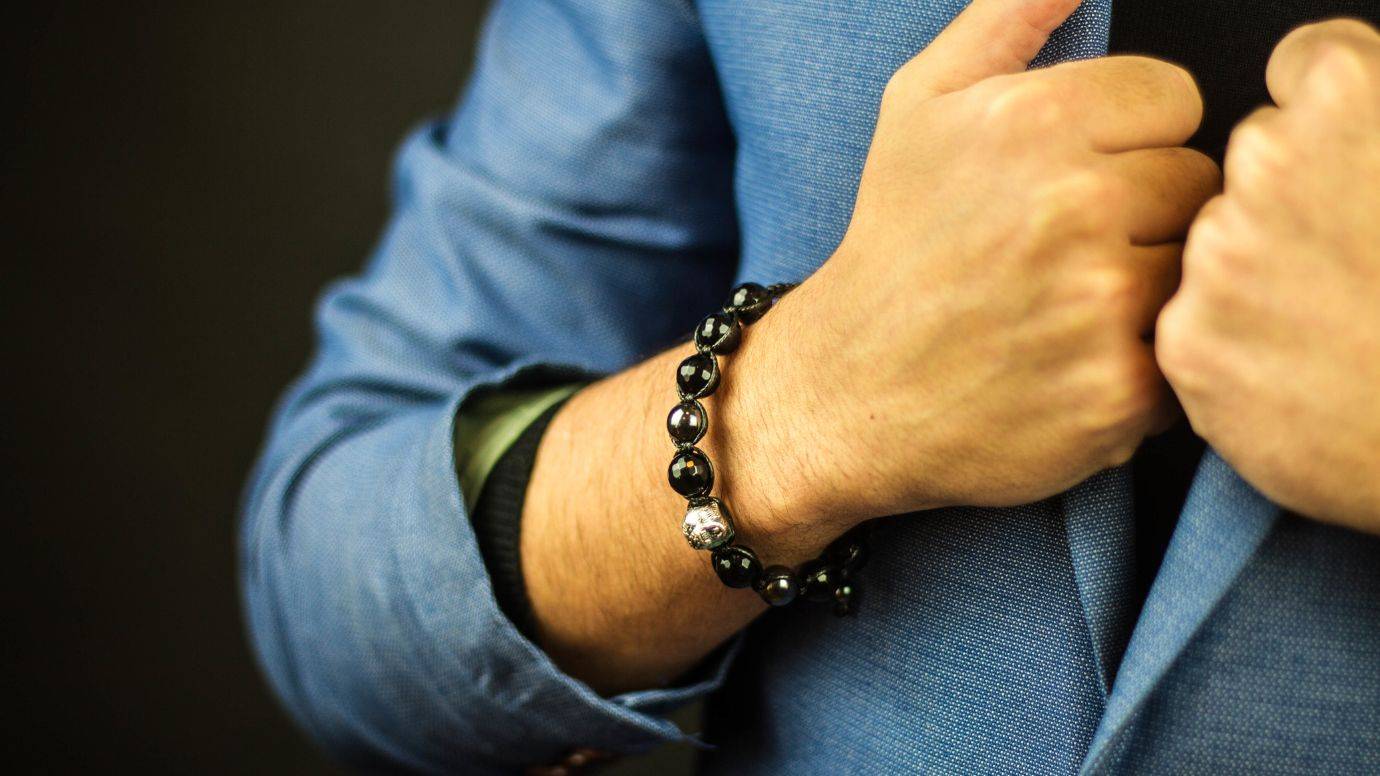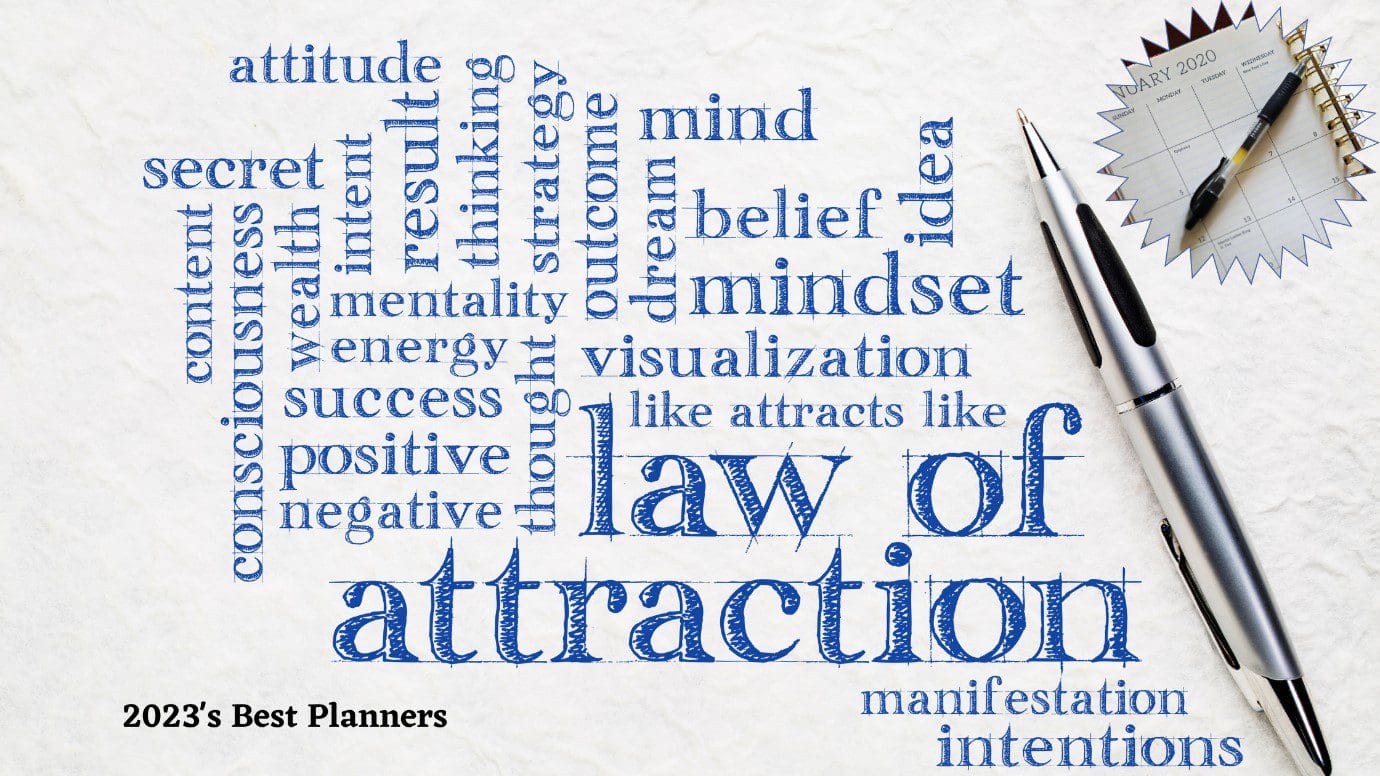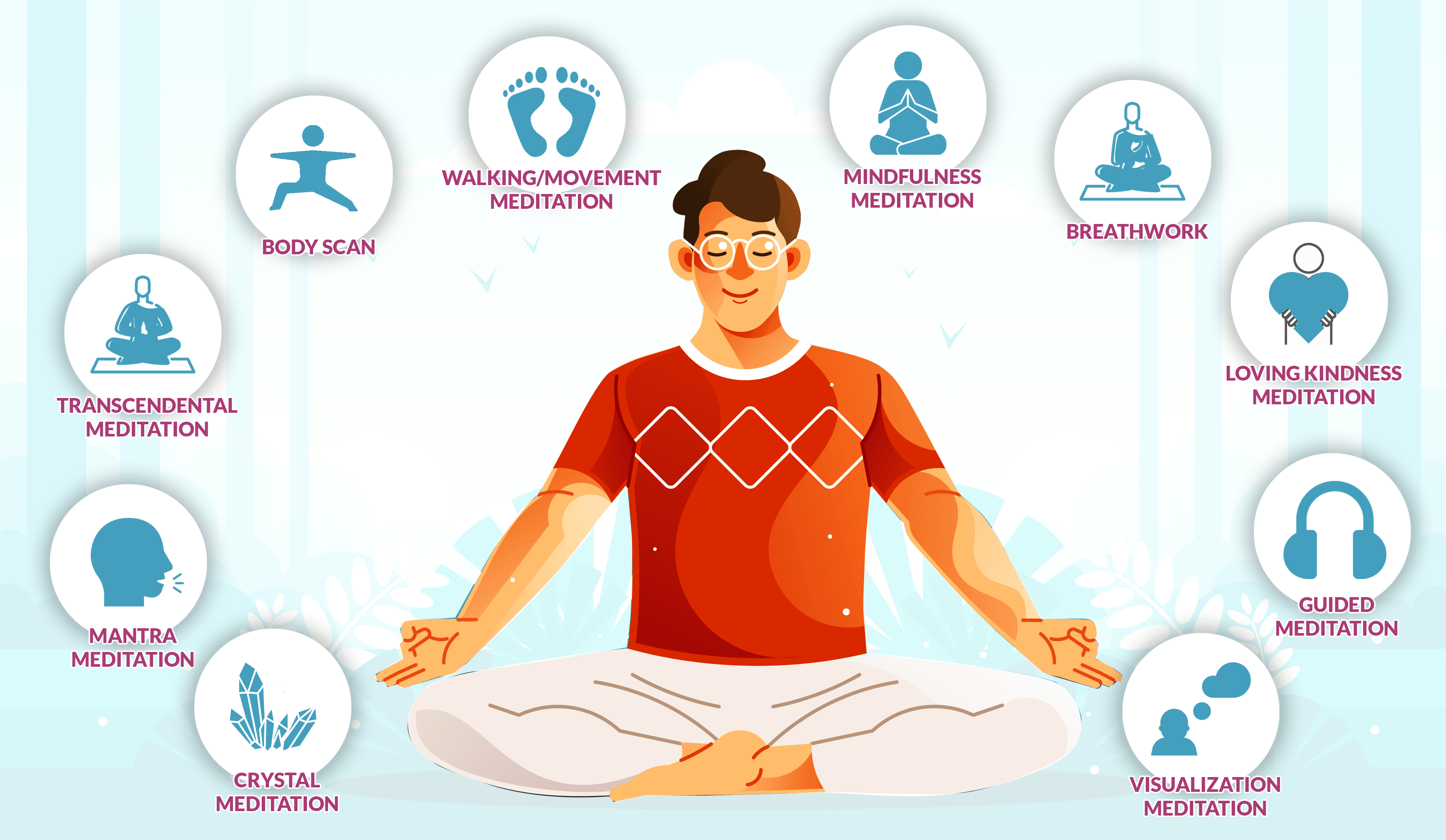
Here are some things that might interest you when it comes to the question of, do solfeggio frequencies work and is there any science behind it? Can you raise your vibrational energy and attune your chakras to “the sound of music” using solfeggio?
Those who walk a spiritual or alternative path are bound to have heard about the Solfeggio Frequencies.
Even those familiar with singing lessons might have learned the Solfege exercise of warming up your voice and using different parts of your body such as back muscles, rib cage, lungs etc, to produce different tones.
The solfeggio frequencies were developed back in the 11th century by Guido d’Arezzo a music theorist.
Nowadays, the frequencies are used in meditation, and are placed in music said to help you release anger, hatred, and fear. Also used in singing lessons, to help with bringing about different vibrational tones in the voice using music.
Today, we are taking an in-depth look into these frequencies to find out if there is truth to all of this.
Can music make you feel better? Let’s find out.
What are Solfeggio Frequencies?
Guido D’Arezzo recognised that various sounds had different resonances in the body when hummed.
He then categorised the chants into 6 different notes that we can use in meditation.
Each of his notes corresponded to a chakra point, thereby allowing the user to unleash the power held there.
From there onwards, the notes were used again and again in monastic chanting.

It is estimated there are some 150 or more chants which harness the power of the solfeggio frequencies… but the story doesn’t end there.
The hymn of St. John the Baptist includes solfeggio frequencies.
It was originally a verse, but Guido D’Arezzo put the notes to it, to help his student monks remember the wording.
This started a plethora of similar musical hymns, which we still use today.
Before this, they say it took a monk up to a decade to learn all their hymns. Afterwards, the Gregorian chant system was born.
To say the solfeggio frequencies are tied to religion is an understatement. They were born out of worship.
However, by the 14th century, these notes had largely fallen out of use.
They were resurrected in the 20th century by modern spiritualists.
It is also worth mentioning that there were only 6 initial notes.
Over the years, three more have been added. The original ‘ut’ has been replaced with ‘do’… which brings us to our next point.
What’s The Sound of Music got to do with Solfeggio Frequencies?
You probably already know or even sung along with the solfeggio frequencies, that is if you have ever watched “The Sound of Music”, so here they are for you…
Let’s introduce ourselves again to this sing along which goes like this:
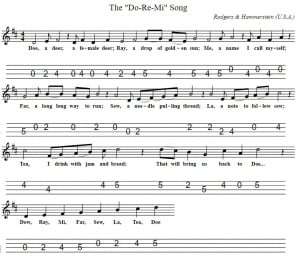
- Doh, a deer, a female deer.
- Ray, a drop of golden sun.
- Me, a name I call myself.
- Fa(r), a long, long way to run.
- So (sew) a needle pulling thread.
- La, a note to follow sew (they had run out of inspiration by then).
- Tea, a drink with bread and jam.
Repeat back to doh again.
As you can see, in this version they have gone with 7, which is the preferred teaching of solfeggio frequencies.
It could be because each corresponds to a chakra point, or it could be debated between musicians that have raged for years. The reasons are complex, generally 7 solfeggio frequencies are used.
Why would you practice Solfege?
Although spiritual in nature and by design, the solfeggio frequencies crossed over into the musical realm.
For this reason, there has been ongoing debate about what they are, how they should go, and how they should be used.
Singers practice Solfege by running through the scales with their voice, usually before any intense singing sessions.
It allows them to free up blockages in the throat, get ready to perform, and get their voice in the best possible shape for their performance.
Practicing solfege in a spiritual sense, however, involves meditation blended with humming the notes or simply listening to meditation music that aligns with the chakras.
Each note unblocks and re-balances a chakra point – at least, that’s the non-scientific explanation.
We will cover the science behind the Solfeggio Frequencies in a moment.
The modern way to enjoy solfege is to listen to these healing frequencies through YouTube videos, apps, or elsewhere on the internet.
Listening to music made with solfege notes allows for a deeper relaxation and better meditative state.
Spiritual practice of solfege can lead to a calmer mind, better stress control, and overall improved well-being. Remember – when Guido D’Azzezo first devised them, he intended they be chanted.
Do Solfeggio Frequencies Work?
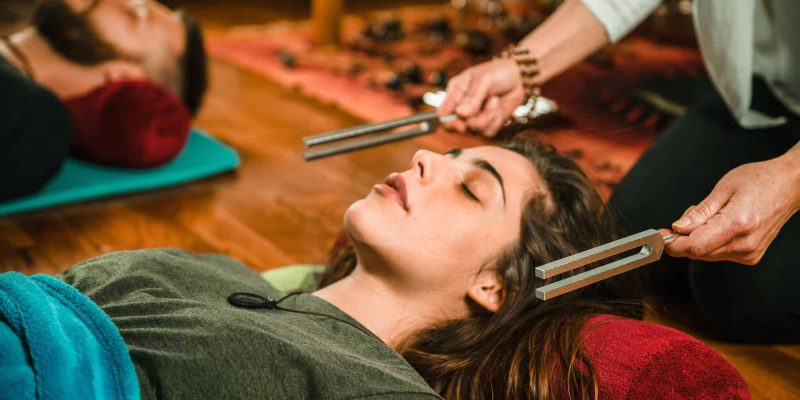
This is such a broad question so we will attempt to break it down.
Whether or not they work depends absolutely on what you are hoping they will achieve for you.
For example, if you are a singer doing a warmup, then yes, they will warm up your voice. If you are using them in meditations, however, is another matter.
Naturally, we then turned to the science. Lucky for all of us, there has been abundant study into this area since we have had hundreds of years to ponder them.
Since the Solfeggio Frequencies are musical notes, we can monitor the direct effect of listening to them on the human body.
Scientists do this by monitoring things like heart rate, blood pressure, emotional and mental states, and other factors.
For the study to be effective, these factors need to be monitored before, during, and after, listening to the frequencies.
The results are overwhelmingly in favour of the Solfeggio Frequencies inducing a relaxed state, a slower heart rate, and a calmer mind.
There is a study in the National Library of Medicine that was completed in 2015.
This study focused on whether low-frequency sounds could be a possible treatment for Fibromyalgia. The study found significant improvement across 73% of their case studies.
A variety of other studies show us how sound healing can be used to treat tinnitus, another investigates the ability of sound waves to stimulate cell growth – and we all know that ultrasound scanning is able to help doctors discern how we should heal, right?
Given that all the above methods of healing use sound as a tool, it’s safe to say that healing through sound waves is an established fact.
Why do People Listen to Solfeggio Frequencies?
People listen to solfeggio frequencies while at home, at their desk, or through their headphones.
This induces a sense of tranquillity and wellbeing, that helps you to bust stress.
Listening to the solfeggio frequencies has a better effect than just on your health, though.
With all that de-stressing sound pulsing through your body, listening to the solfeggio frequencies is helping you to calm and soothe yourself.
Listening once a day for a series of weeks could change your entire temperament.
Those who engage in meditations to help themselves stay calm, have lower blood pressure, a healthier heart, and a better immune system.
So much so, in fact, that scientists are looking at meditation as a possible treatment for coronary heart disease and diabetes .
When you combine the meditative state with the solfeggio frequencies, you are therefore helping yourself to feel better in the long term.
You aren’t as quick to anger, you have better patience, you don’t shout as much, all of this from simply listening to some sounds…who would have thought, right??

When you combine the meditative state with the solfeggio frequencies, you are therefore helping yourself to feel better in the long term.
You aren’t as quick to anger, you have better patience, you don’t shout as much, all of this from simply listening to some sounds…who would have thought, right??
How long do you listen to Solfeggio Frequencies?
Listening to the Solfeggio frequencies are said to tie in with your meditations.
Some suggest for us to listen to them for around fifteen minutes every day, while in a meditative state.
You may notice the difference in your anxiety and stress levels from the first use. We can even use them at night to help us sleep.
If you can’t listen once every day, three times a week for fifteen-minute sessions as this seems to be enough time to have an effect on the body.
You might consider then humming the frequencies during meditation, as well as listening to them.
If you have trouble with a specific chakra point, you can even listen to the frequency that corresponds to it. This will help you to meditate over that particular blockage and rebalance anything that is out of sync energetically.
How to get started?
You can find the frequencies on YouTube if you are interested in practising solfege yourself.
Listening to them should help you enter a calmer state of being and rebalance any chakra issues you may have.
There are also some downloadable apps which will guide you through meditations using the frequencies.
Finally, if you need help to meditate, here is our YouTube channel with various guided meditations as well as some solfeggio frequencies meditation music that includes chakra balancing.
What are Binaural Beats, just so you don’t get confused ?

Another term you might hear brandied about alongside the Solfeggio Frequencies, are ‘binaural beats’.
Binaural beats are those created by playing two different frequencies at once.
Your brain then meets these in the middle, hearing a third tone which comprises of both.
You are essentially listening to three different tones, only one of which you truly hear.
Why?
Binaural beats are a great way to help the power of suggestion work for you.
People listen to them during meditations, hypnosis or while sleeping, with the express intention of “self repair” or working on a particular goal in mind.
They work to strengthen neural pathways, help your memory, and even improve your attention span.
The Solfeggio Conclusion
Using the solfeggio frequencies may support with feeling calmer and relaxed.
As it seems to have a soothing effect, as it usually helps with sleep, and makes it far easier to achieve meditative trances.
They can be found in places of worship (churches), in holistic and alternative healing practices, as well as through simply listening to music.
Give solfeggio frequencies and binaural beats a try for yourself and see which one you prefer and notice how it replenishes your mind, body and soul.
https://www.ncbi.nlm.nih.gov/pmc/articles/PMC4017270/
https://www.ncbi.nlm.nih.gov/pmc/articles/PMC4325896/
https://www.ncbi.nlm.nih.gov/pmc/articles/PMC6517157/
https://www.ncbi.nlm.nih.gov/pmc/articles/PMC5791945/
Disclaimer: Our web pages and blog posts provide general information for general purposes only and not to be used for any medical, legal or alternative health advice for any type of physical, mental health or financial concerns.Always speak to your practitioner before embarking on any new alternative treatments. If you have concerns about any medical matters, you should always consult your healthcare provider without delay.We thank you for taking full responsibility for your own health and wellbeing in life. ☺

